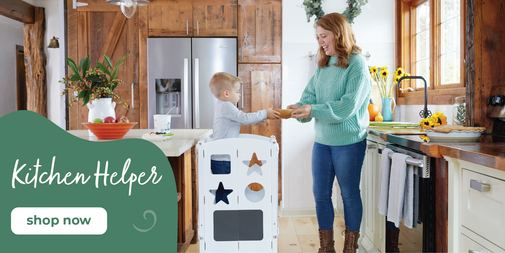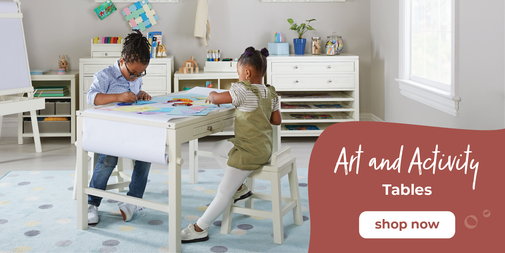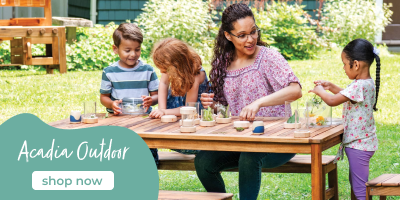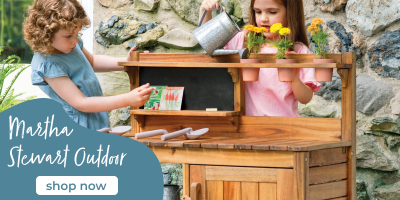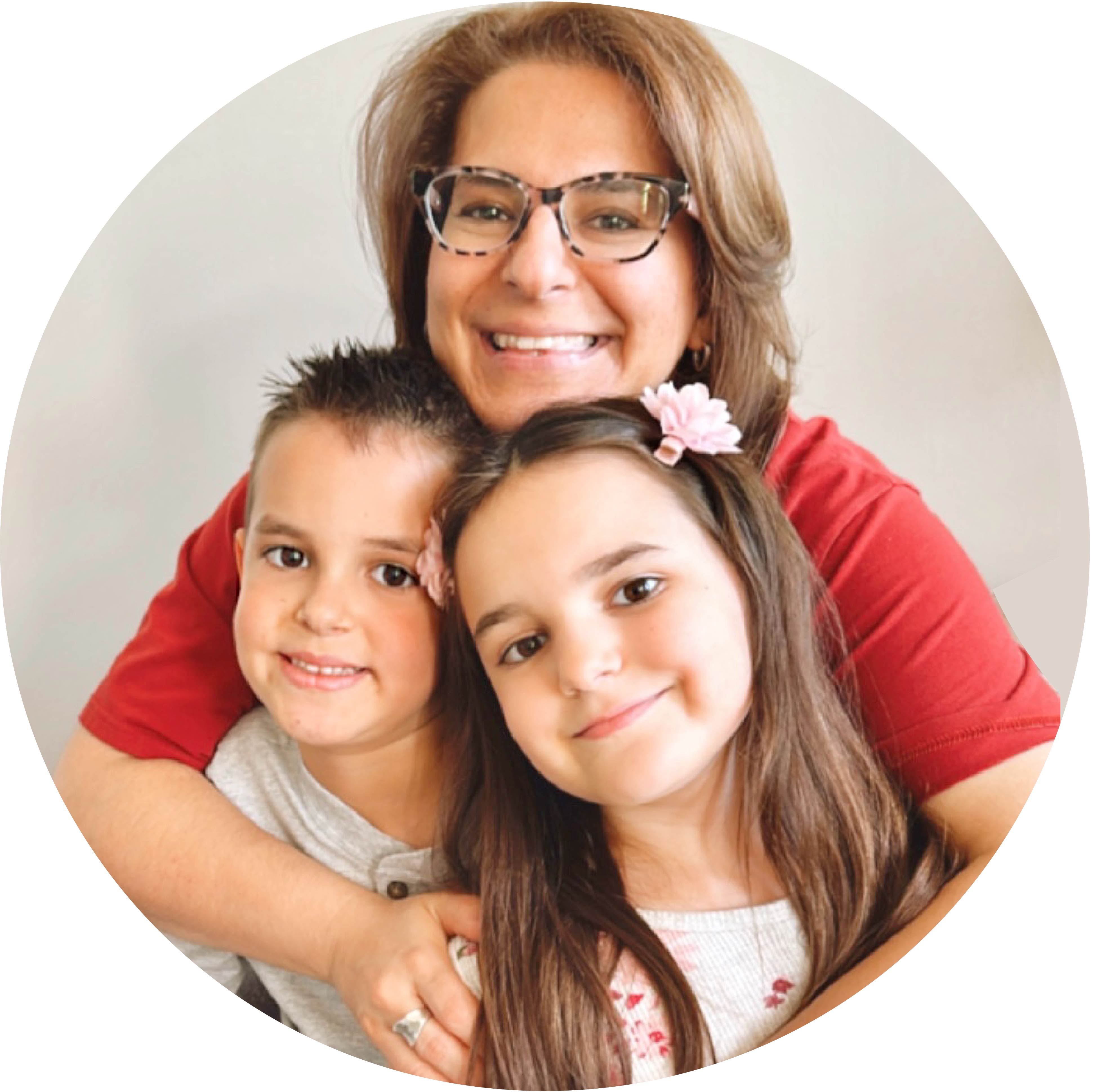4 Wet Play Ideas to Try This Summer
There's a reason your child your baby, toddler or child is drawn to wet play. Water play is an inherently fun sensory activity that helps reduce stress.
When scooping, pouring, transferring, squeezing and stirring water, children strengthen their hand muscles, hand-eye coordination, fine motor and pre-writing skills. Through this self-guided play experience, your child is learning more about the world around them. There is natural sensory exploration as children feel, see and hear the water. This play leads to scientific inquiries and discoveries of concepts such as cause and effect, temperature, buoyancy and volume.
As they engage in play, children innately harness their imagination and creativity while developing their social and language skills through interactions and communication of actions and observations.
The best way to inspire engaged play is to leave materials out in a tray, bin or jars, and leave it to your child to empty, fill and setup their own play scene.
Here are some sensory-based, summertime wet play ideas that can be used both indoors and outdoors:
1. Combine Water and Coral Connections
Simply fill a medium to large plastic bin, a plastic sand box, sand and water table or even a bath tub with water. Leave out a tray or bin with Coral Connections and a cup or scooper, and allow your child to explore the materials. If a prompt is needed, simply attach a coral piece to one of the suction pieces and attach it to the inside of the water bin.


This simple setup works hand strengthening and hand-eye coordination as your child connects the coral pieces. Their senses are engaged as they see, feel and hear the water.
Science experiments take place as your child tests cause and effect by dropping the animal figurines into the water, scooping, pouring and transferring the water. They will learn about buoyancy as they test what sinks or floats, and volume as they fill and empty their cup or scooper. Physics is explored as your child pours and drops materials from different heights.

2. Use Edible Mud with Little Pavers
Create your own taste safe mud (for mouthing children) or simply use outdoor dirt and water and pair with Little Bricks or Little Pavers for a construction-themed sensory play setup.
Leave out a bowl or jar of cocoa powder and another jar of water for your child to mix into play mud. If playing outdoors, have a designated area from which your child can scoop and mix dirt with water to create mud. Prompt your child to use Treasure Tubes or a basket to forage for small sticks and or pebbles to bring into their play setup. Construction vehicles such as a loader or dump truck are a great way to extend this play and add even more gross movement in.

Leave the Little Bricks or Little Pavers further out from where the play mud area is. Construction vehicles can be used to transport the bricks or pavers back to the construction site for building with.
Children indulge their senses as they mix and create mud and spackle it on with a spoon or palette knife to layer on their stacks of weighted Little Bricks or Little Pavers. A bucket or spray bottle of water and a cleaning brush or designated play toothbrush can be left out in a different area or zone, prompting your child to again transport their bricks or pavers, after completing their building or stacking play, to the wash station to clean off their vehicles and building materials.

This activity strengthens a child's gross and fine motor skills, focus, concentration and spatial awareness as they collect, build, stack, breaks down, transport and clean their materials.
3. Make Bubbles with Discovery Frames
Make your own DIY bubble mix or use store bought bubble solution. Pour it into a large, plastic bin and leave out with Discovery Frames and yarn, twine or thread. Have your child weave different patterns onto the frames and test how each woven frame creates bubbles, once they dip their frame into the bubble solution and wave it in the air or run with it.
Hand-eye coordination, hand strengthening, focus, concentration, movement, and creativity are all at work as your child plays.

4. Combine Treasure Tubes and Water
Leave out a plastic bin or bowl of water with Treasure Tubes, droppers, scoopers and measuring cups. Have your child forage for loose parts such as flowers, sticks, rocks, fruit, buttons or small toys.

Allow your child to have self-guided play with the materials or prompt them to test buoyancy of their various materials. Have your child hypothesize (make an educated guess) which material will float or sink. Older children can take a picture with a camera or draw their observations on paper.


A variation to this activity is to leave out Treasure Tubes with colored water (in primary colors: red, yellow and blue) and have your child use droppers to mix the colors and hypothesize what color will result.
*See included care instructions for proper usage of Treasure Tubes with water.
